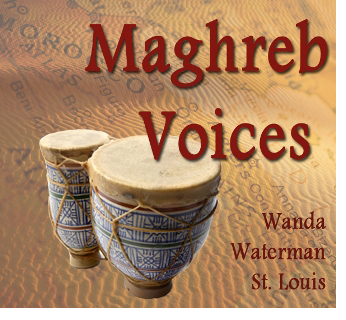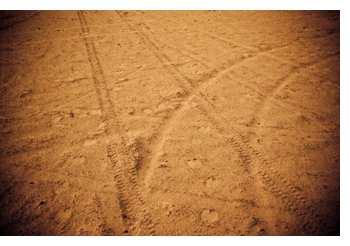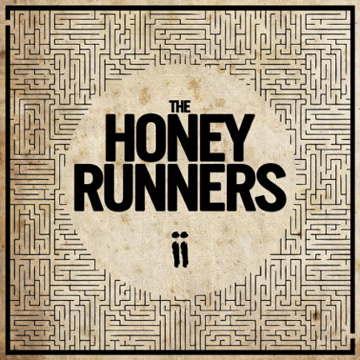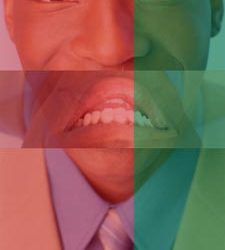 (Read Parts I, II, III, and IV of this series.)
(Read Parts I, II, III, and IV of this series.)
?Standin at the crossroad, babe,
risin sun goin down . . .
I believe to my soul now,
Poor Bob is sinkin down . . .
Robert Johnson, ?Cross Road Blues?
The most immediate interpretation of the crossroads metaphor is that it signifies the juncture at which the musician crosses over from the banal world of practicing and studying into the supernatural world of magical ability. You hand the mysterious man your guitar, he tunes it, shows you a couple of licks, steals your soul, and all’s well that ends well until you realize that you’ve traded eternity for the doubtful privilege of being a guitar god.
But like most metaphors, the crossroads symbol carries many meanings. We can also see it, for example, as the place where raw materials meet refined goods, where Africa meets Europe, where heaven meets earth, or where the future hooks up with the past.
It’s a concept often seen in the works of both desert musicians and Mississippi hill country blues players. There, one finds a single-minded devotion to modal forms and raw, essential lyrical matter, yet at the same time a delighted fascination with modern technology and methods. When he was finally able to quit sharecropping and gain access to a studio, blues man R.L. Burnside threw himself into electronic experimentation and recording with alacrity. In the latter part of the 20th century, desert nomad musicians became huge fans of American guitarists and managed to adopt some of their techniques without being imitative.
The Sahara is one place where the primitive is kept alive in spite of an urgent necessity to embrace the modern. As such it mirrors a key element of the human condition: our inability to abandon the past and really move on. Karl Marx was wrong; life did not completely change in response to the screeching gears of the age of industry. As recent wars and revolutions have shown, we’re still living in the days of Abraham, Isaac, and Ishmael, of Achilles and Hector, of Nefertiti and Tutankhamun, of peoples still roused to protest, of vengeance, and of social action, all with the ancient stories as backdrops.
 As Northrop Frye wrote nearly 30 years ago in The Great Code, the poet’s role is to keep alive and vibrant the primitive language modes in the midst of the flux and ephemera of modern life?to sustain the crossroads, as it were. There are poetic spaces on this planet that bear up well under this responsibility. Not surprisingly, they are usually those environments requiring very precarious and specialized existences, existences that often plummet the individual to the depths of existential despair. Although I would stop short of calling this a good thing, despair is in fact one of the more enriching elements in the world of art.
As Northrop Frye wrote nearly 30 years ago in The Great Code, the poet’s role is to keep alive and vibrant the primitive language modes in the midst of the flux and ephemera of modern life?to sustain the crossroads, as it were. There are poetic spaces on this planet that bear up well under this responsibility. Not surprisingly, they are usually those environments requiring very precarious and specialized existences, existences that often plummet the individual to the depths of existential despair. Although I would stop short of calling this a good thing, despair is in fact one of the more enriching elements in the world of art.
Take, for instance, these blues lyrics from Lonnie Johnson: ?So tired of sighin?./So tired of cryin?./I’m so tired of livin? all alone./All my days seem weary./The skies seem dreary./And I’m all alone and where must I roam??
And those from an old nomad poem from the anthology al-Majani al-haditha, published in 1946:
?I am tired of the burdens of life; make no mistake, whoever lives to fourscore years grows tired. I know what is happen
ing today and what happened yesterday, but I cannot tell what tomorrow will bring. I have seen the Fates stamp like a camel in the dark; those they touch they kill, and those they miss live on to grow old.?
Where despair starts walking, religion is not long to follow, and yet the religions of the peoples of these sorts of places are altered by the converts in response to exigencies of the environment. When, for example, Christian missionaries told Inuit women that they must wear skirts, the women acquiesced by wearing bright flowing skirts over their heavy?and very necessary?leggings.
Similarly, Islam reached the nomadic tribes because of Sufis who traveled the Sahara spreading their own mystical version, which turned out to be more adaptable to desert life than were the more legalistic dictates of the Sunnis. The desert tribes, because of constant travelling and a desperate daily struggle for survival, often found it impossible to keep to the rigorous schedule of prayers, charitable donations, mosque visits, and pilgrimages more suited to the affluent village bourgeoisie. Their lives were more adaptable to Sufism, with its emphasis on mystical experience and attentiveness to God.
To be continued . . .


